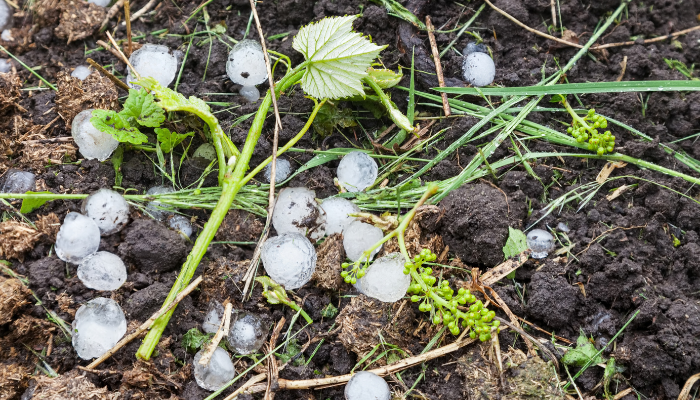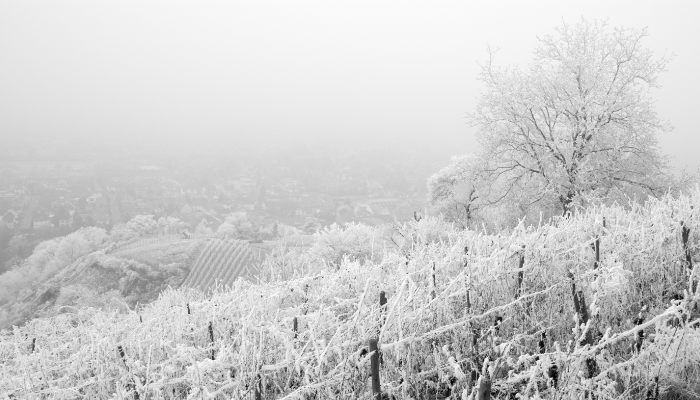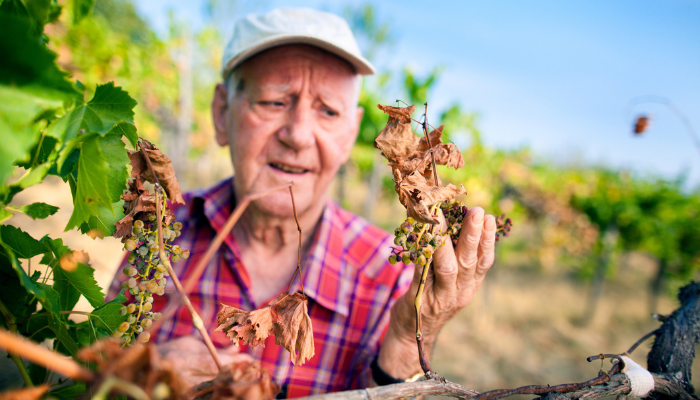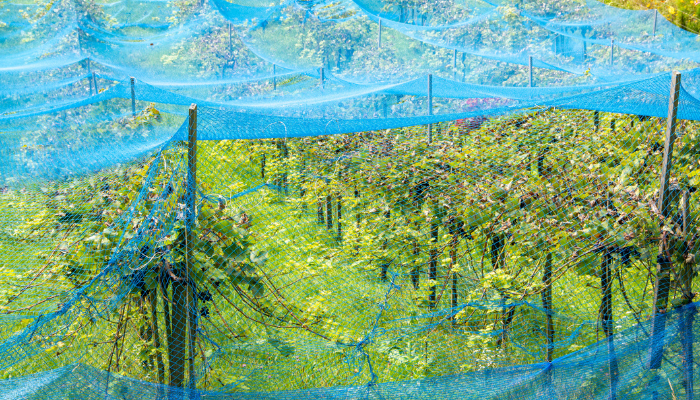By Ross Wise MW
Climate is critical to winemaking. The first thing they teach you in viticulture class is that 90% of a wine’s quality potential comes from the vineyard. In my experience, it is closer to 100%.
The soil and the vine both play their part, but the climate is the key to grape and wine quality, as well as yield. Wine grapes are incredibly sensitive to weather extremes. Excessive rainfall, drought, frost, hail, extreme heat, and wildfire smoke can all devastate a crop. As can an ever-expanding array of pest and disease adversaries. Extreme weather events are becoming increasingly frequent in many of the world’s wine regions, and quality and yields are under threat.

Flaming hills, flood-submerged wine regions and hail stone blanketed vineyards have captured a lot of attention recently. Climate change’s impact on the wine industry has been present for some time though, and global warming is well documented through decades of wine production. A look at the trend of alcohol levels on wine labels in classic regions tells this story. Alongside steadily rising alcohol levels, acidity levels in grapes were dropping, tannins were softening, and aromas were moving from fresh, to ripe, to jammy. Wine styles have been evolving right beneath our noses.

Yields have also been impacted by climate change. Many regions have suffered reduced crops due to severe frost, hail, extreme heat, flood, and drought. Burgundy has seen more than its share of these extremes, resulting in desperate shortages of wine on the shelves. And inflated prices for the bottles that do make it that far. Viticulture has become a risky investment in many regions, and winemaking is a vastly more challenging profession than it appears. It’s not all Winemakers’ dinners and glasses of Chardonnay on the patio.

But does Winemaking affect the climate?
It is undeniable that the wine industry comes with a footprint. Viticulture involves the burning of diesel. Winemaking consumes energy for refrigeration and equipment use. The cargo ships and trucks that distribute wine across the globe require fuel for their engines. However, there are many excellent examples of sustainable, organic, and regenerative wine growing across the globe. Producers have found innovative ways to get themselves off the grid, recycle wastewater, incorporate native plants and animals into farming, and reduce or eliminate emissions. International foundations like the Porto Protocol and International Wineries for Climate Action lead the way, showing the industry what is possible through collaboration and commitment to meaningful targets. Despite its footprint, the industry is proactive and innovative, and not shying away from its responsibilities.
So, what is next for the wine industry?
Adaption is the new buzzword. Leaf and canopy management strategies are employed to slow vine growth and cool the grapes. Harvesting earlier helps to reduce sugar levels–and therefore alcohol levels–without loss of quality for some varieties. Overhead hail nets as seen in Mendoza can intercept crop-destroying frost nuggets before they cause harm. Adaption is a way to hold on to the status quo for a bit longer. But it is not a long-term solution.

Longer-term mitigation requires rethinking vineyard establishment, re-evaluating grape variety choices within regions, and in some cases, relocating viticulture to cooler sites at higher latitudes or altitudes. Bordeaux, a conservative region steeped in history and tradition, reacted to the threat of climate change by adding once unthinkable international varieties such as Touriga Nacional to their approved variety regulations. In Alsace, 12th-generation winery Domaine Muré responded to the warming climate with an experimental planting of Syrah–a seismic shift for this white grape and Pinot Noir-focused region. In Chile, driven by a decade of drought, viticulture is moving south from existing regions to find reliable sources of water.
Adaption and mitigation are part of the story, but climate action is vital for the future of the wine industry. While sustainable, proactive viticulture and winemaking practices are increasingly common and impactful, the industry’s largest carbon footprint contributor is glass packaging. Does every wine need a glass bottle? No. There are more sustainable options for wines that aren’t matured in a cellar for a year or more between packaging and consumption. And if we are honest with ourselves, only a small percentage of the world’s wine production needs that. Along with packaging, distribution is also under the microscope. Shipping wine in bulk and packaging it in its intended market has been a sustainable success story for the industry. Drink local campaigns have strong merit and should continue to gain momentum. Wine growler, anyone?

The wine industry has always been good at telling stories. Climate change mitigation and action are now a part of that story, by necessity. Will consumers enjoy the evolving wine styles and climate-driven innovations in the chapters that follow?

Ross Wise MW is based in the Okanagan Valley, BC, where he works as Winemaker at the iconic Black Hills Estate Winery. In 2020, Ross became Canada’s 7th Master of Wine, and during his studies completed a research paper on the implications of climate change on viticulture in the Okanagan Valley.

